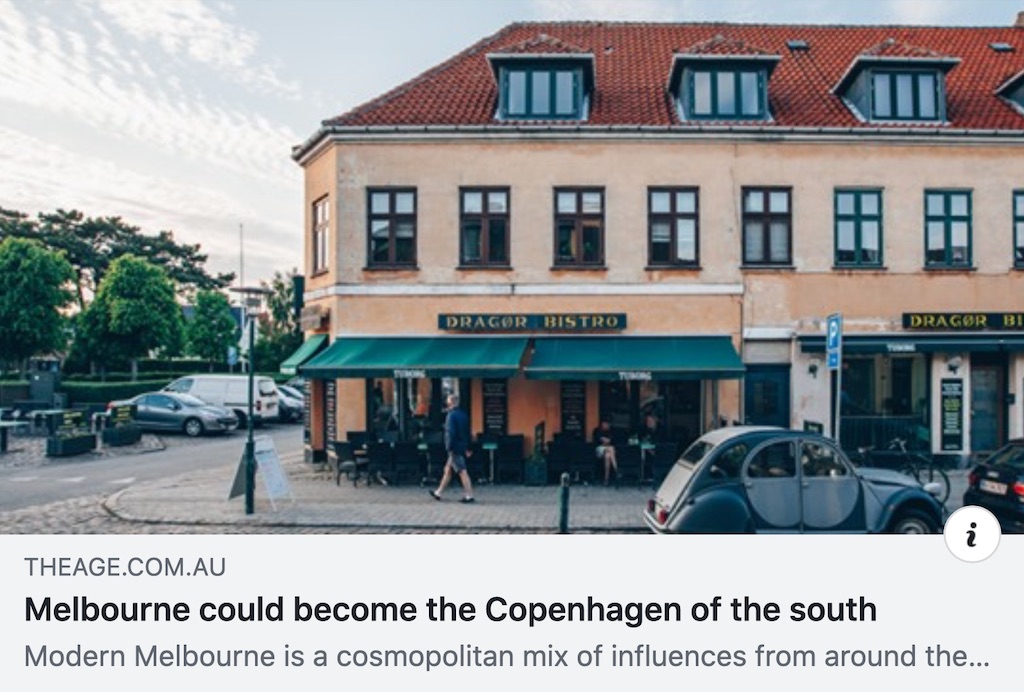Yarra can learn from Copenhagen
Copenhagen is highly regarded as a city that supports active transport, as described in the book ‘Copenhagenize‘. Residents walk, cycle and take public transport to work, even through winter, because the infrastructure is of high quality and well maintained, including snow-plowing the cycle lanes before the vehicle lanes.

Melbourne can do this too
In The Age, Nicholas Reece argues that Melbourne can be Copenhagen:
Copenhagen was not always a cycling and pedestrian friendly city. For many decades primacy was given to cars – roads were widened to make way for more cars and public squares were converted into carparks. But from the late 1970s Copenhagen started redesigning its transport system to encourage cycling, walking and public transport. After decades of investment the city now has 50 per cent of all trips to work and school made by bicycle. Compare that to less than two per cent for metropolitan Melbourne.
Nicholas Reece in The Age

Copenhagen is comparable
Greater Melbourne’s population of 5 million is more that twice that of metropolitan Copenhagen’s 2.4 million. Even so, the lessons of Copenhagen can be applied to Melbourne, especially if greater Melbourne becomes a polycentric city, or a grouping of Copenhagens. Examples include the Randstad megalopolis in the Netherlands, or Greater Manchester in the UK, both of which have a comparable geographical area to greater Melbourne.
Copenhagen is achievable
Copenhagen shows how to retrofit wider footpaths and protected bicycle lanes to a city, demonstrating that it is very achievable. Once a city has been ‘Copenhagenized’, the next step is to implement the higher quality infrastructure found in Amsterdam. Learn more in this video:
How you can help
You can help by appearing on the Streets Alive Yarra website as a champion for your local street, neighbourhood, or school.
